by Charis Kharkongor Ripnar
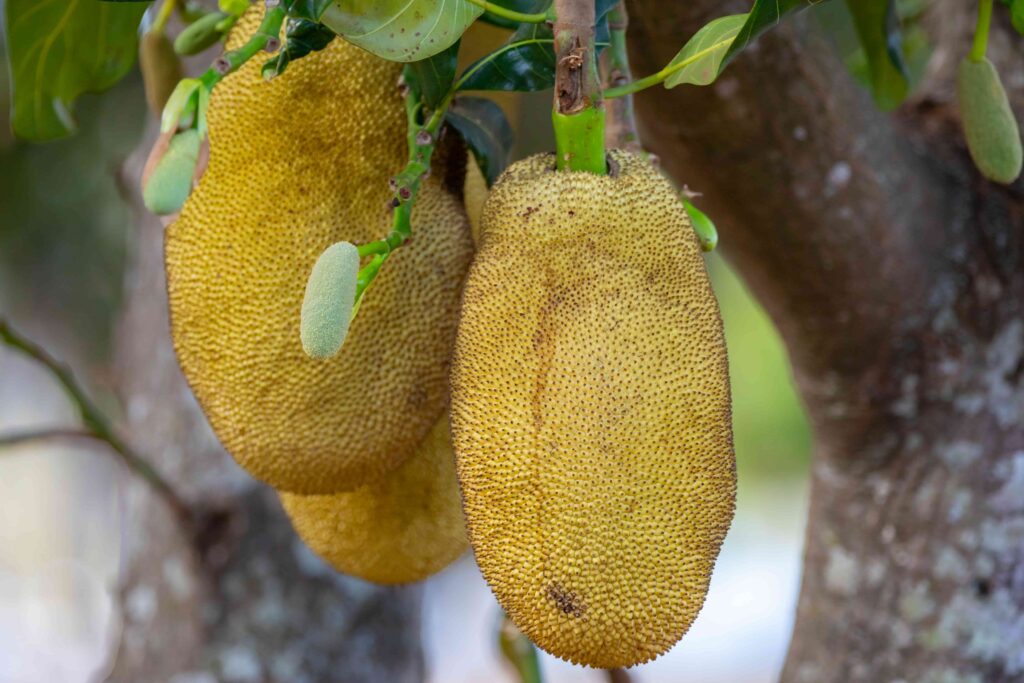
Jackfruit, often referred to as the "neglected treasure," stands as one of the most plentiful tree crops in the state while paradoxically remaining one of the most overlooked fruits.
Despite its bountiful presence across nearly every corner of Meghalaya, this remarkable crop goes largely untapped, resulting in an annual spectacle of fallen and decaying jackfruit. A conservative estimate from the Garo Hills alone paints a staggering picture of wastage, with roughly 10.87 lakh metric tonnes of ripe jackfruit going to waste, amounting to a value of Rs. 434 crores per season.
A tropical Delight
Jackfruit is a tropical fruit tree species found in tropical, high-rainfall, coastal and humid areas of the world. It belongs to the family Moraceae. Scientifically Artocarpus heterophyllus is the favourite fruit of many, owing to its sweetness. The jackfruit tree is widely cultivated in tropical regions of India, Bangladesh, Nepal, Sri Lanka, Vietnam, Thailand, Malaysia, Indonesia and the Philippines. Jackfruit is also found across Africa, e.g., in Cameroon, Uganda, Tanzania, and Mauritius, as well as throughout Brazil and Caribbean nations such as Jamaica. However, India is considered to be the native place of Jack fruit.
Tracing the Historical Roots of the Jackfruit
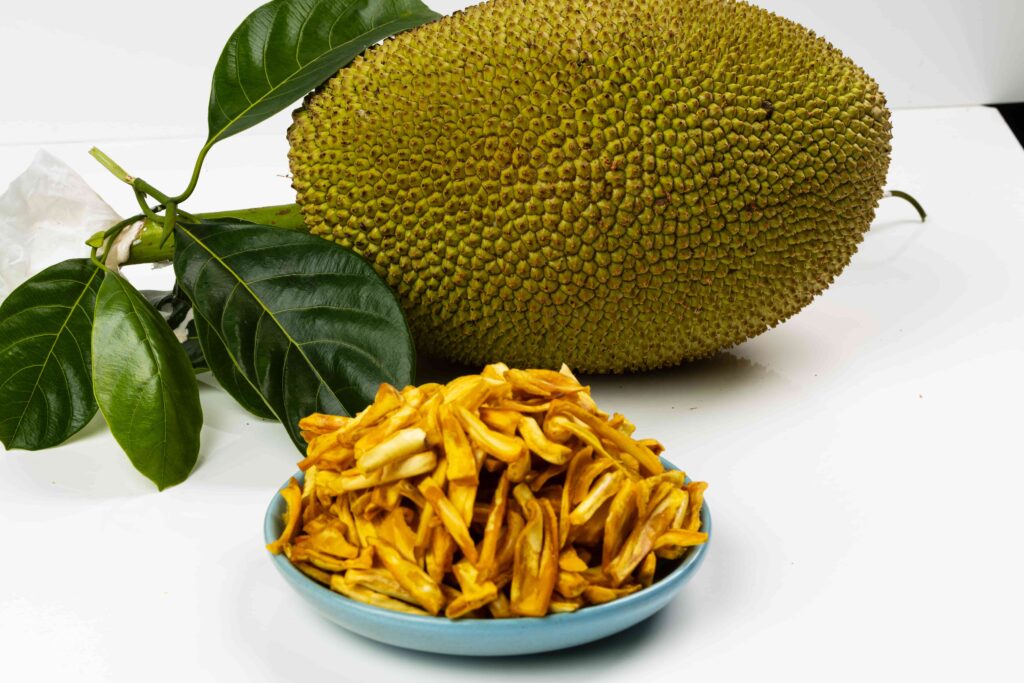
Jackfruit has played a significant role in Indian agriculture for centuries. Archaeological findings in India have revealed that jackfruit was cultivated in India 3,000 to 6,000 years ago. Findings also indicate that the Indian Emperor Ashoka the Great (274–237 BC) encouraged arbori- horticulture of various fruits, including jackfruit. Varahamihira, an Indian astronomer, mathematician, and astrologer, wrote a chapter on the treatment of trees in his Brihat Samhita. His treatise includes a specific reference to grafting on trees such as jackfruit.
The jackfruit is native to parts of South and Southeast Asia. It is believed to have originated in the rainforests of the Western Ghats of India and is cultivated throughout the lowlands in South and Southeast Asia. Major jackfruit-producing countries are Bangladesh, India, Myanmar, Nepal, Thailand, Vietnam, China, the Philippines, Indonesia, Malaysia and Sri Lanka. Jackfruit is also found in East Africa, e.g. Uganda, Tanzania and Mauritius, as well as throughout Brazil and Caribbean nations such as Jamaica. Jackfruit is the national fruit of Bangladesh and is one of the three auspicious fruits of Tamil Nadu in India, along with mango and banana.
Unveiling the Nutritional Benefits of Jackfruit
Jackfruit is a nutritious fruit rich in carbohydrates, proteins, potassium, calcium, iron, and vitamins A, B, and C. Due to high levels of carbohydrates, jackfruit supplements other staple foods in times of scarcity in some regions. The flesh of the jackfruit is starchy and fibrous and is a source of dietary fibre. The presence of isoflavones, antioxidants, and phytonutrients in the fruits indicates that jackfruit has cancer-fighting properties. It is also known to help cure ulcers and indigestion. In common with other tropical fruits such as durian, banana, etc., it is also rich in energy, dietary fibre, minerals, and vitamins and free from saturated fats or cholesterol. Only a cup of fruit contains 155 calories and only 4 grams of fat. The fruit is also low in saturated fats, cholesterol and sodium. Jackfruit is rich in vitamin A and, as well as niacin, riboflavin, thiamine and folate. Aside from the vitamin content, the fruit is also rich in essential minerals. The simple sugars present in jackfruit can improve your overall health. A cup of jackfruit contains 11% of the daily recommended allowance of fibre which will improve your digestive system.
India's Vital Role in Jackfruit Production
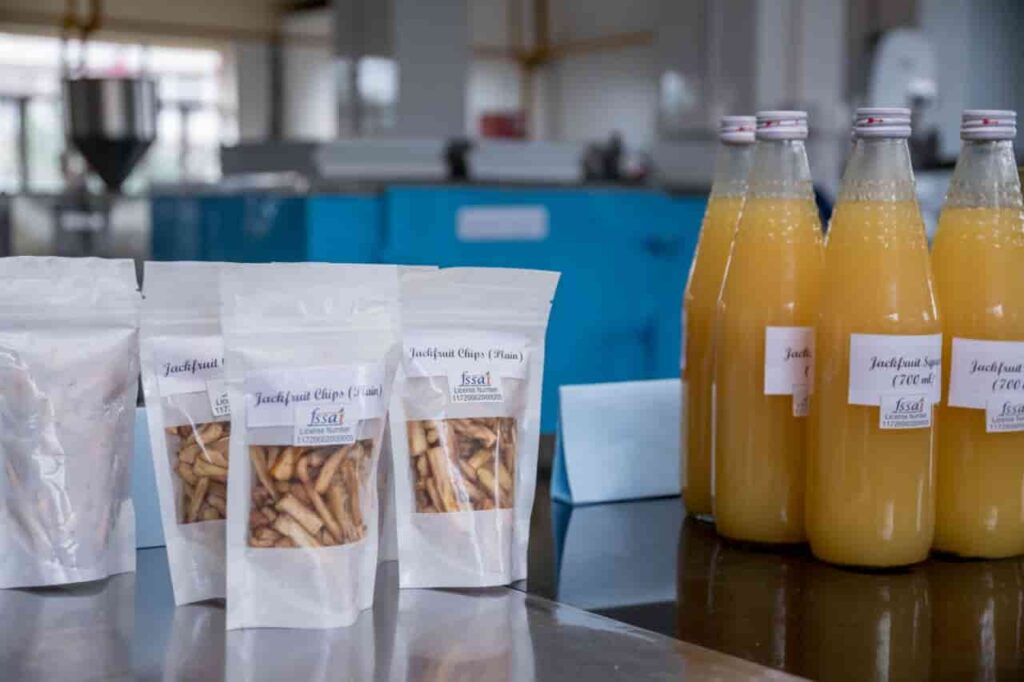
India is the second biggest producer of fruit in the world and is considered the motherland of jackfruit. Chakka, its Malayalam name, according to some, has given birth to the English name jackfruit. In our country, the trees are found distributed in southern states like Kerala, Tamil Nadu, Karnataka, Goa, coastal Maharashtra and other states like Assam, Bihar, Tripura, Uttar Pradesh and the foothills of the Himalayas.
Jackfruit's Untapped Potential in Meghalaya's Garo Hills
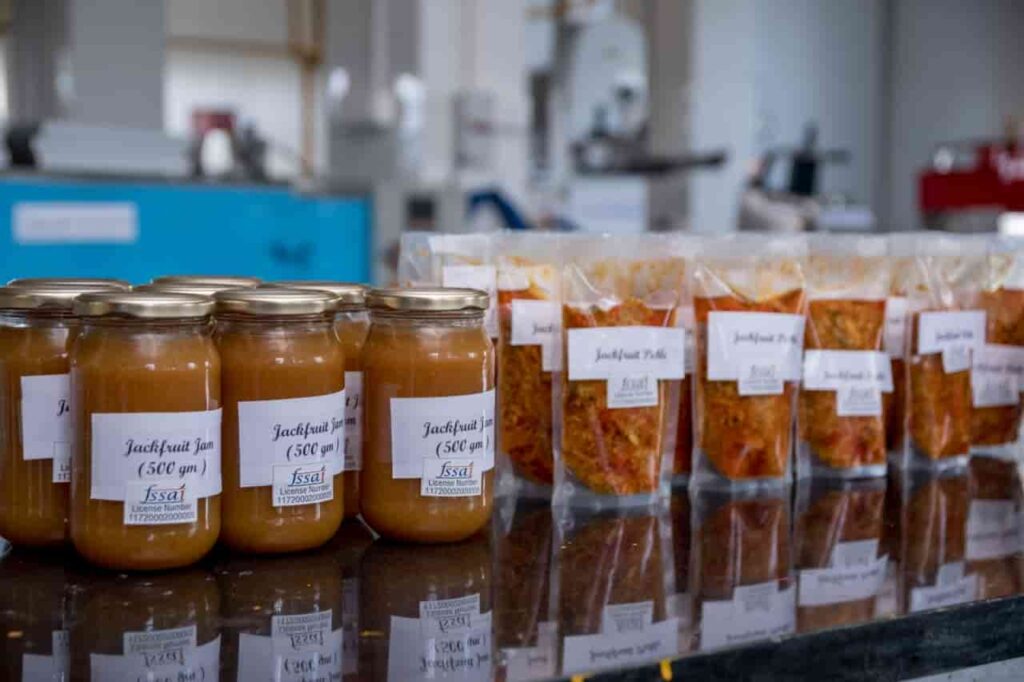
The tree is abundant, especially in the Garo Hills region, southern slopes of East Khasi Hills, parts of West and South West Khasi Hils, Jaintia Hills and Ri Bhoi district. The Garo Hills region of the State has tremendous potential to produce a huge number of jackfruits, but due to a lack of intervention, suitable infrastructure, processing, packaging and market access, enormous quantities of Jackfruit are well-spent yearly. Rough estimates put the number of trees in Meghalaya between 4 to 5 lakh. An assessment done by the Basin Development Unit, East Garo Hills, estimated a loss of Rs. 434.00 crores each season as villagers leave the fruit rotting in the open. In East Garo Hills alone, the villagers are estimated to lose more than Rs.118.00 crore annually by under-utilizing the fruit due to the need for more awareness among the rural communities.
The Potential of Jackfruit with Value Addition
Value addition of jackfruit is not a new concept in the state, and market penetration of the value-added end products is still not there in the North Eastern Region due to a lack of awareness and the fact that the ripe fruit in its original form is difficult and bulky to handle. However, this is a golden opportunity to tap into the latent market for jackfruit value-added products like canned bulbs, chips, papad, juices, flour etc and would give the state a first-mover advantage. An assessment of the current Market scenario of Jackfruit in India shows that the demand is more in the Northern, Western and Southern parts of the country in comparison to the Eastern part, while there is substantial demand in the export market, especially to the UK, Middle East and USA.
Value-added products of Jackfruit are Ripe jackfruit Preserve, Jackfruit Chips, Jackfruit pulp, Jackfruit Mixture, Dehydrated Ripe Jackfruit: Bites, Dehydrated Ripe jackfruit pulp: Chew, Ripe Jackfruit Squash, Jackfruit Pickle, Dehydrated Tender Jack fruit, Dehydrated raw Jack fruit, Ripe Jackfruit frozen RTS juice, Ripe Jackfruit Jam, Ready to cook tender jackfruit, Jackfruit seed flour, Raw jackfruit flour, Jackfruit leathers.
The Promise of Jackfruit Value Addition in Meghalaya
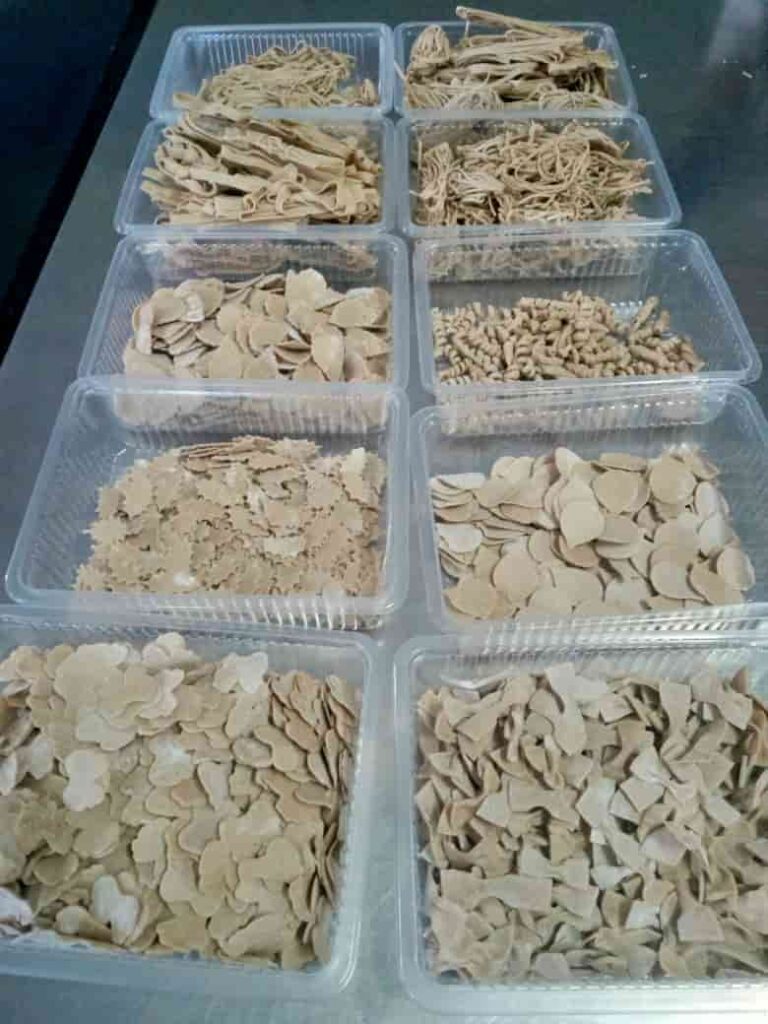
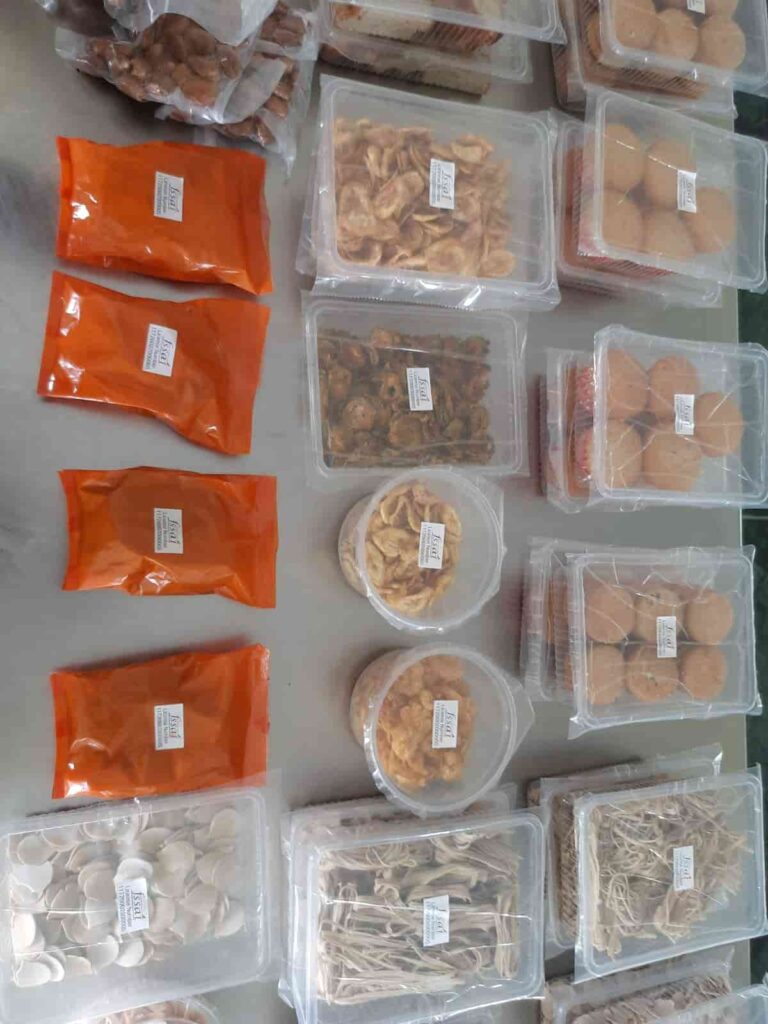

Jackfruit and its value addition is a readymade golden opportunity for the state to improve livelihoods and generate employment opportunities in both the urban and rural areas through the promotion of local enterprises and the creation of its value chains while addressing climate change issues, food and nutritional security. Judging from the experiences of entrepreneurs who have started venturing into this field, there is excellent scope for up-scaling value addition interventions for the crop and a ready market nationwide. More importantly, the Mission will demonstrate the feasibility of turning a long ignored low input, low-cost natural resource of the state into a high-value product capable of sustaining and generating income for a long line of enterprises and entire communities.
Even if only 10 % of the total jackfruit production is tapped and channelized into the value chain, it will generate livelihoods for around 20,000 households. Even more important is the demonstration impact that such a Mission can have on other states of the North East who also have extensive jackfruit plantations and who would be able to learn from the Meghalaya experience also to improve the livelihoods of their people - and that may be something worth investing in.